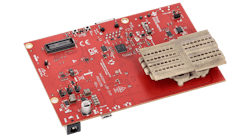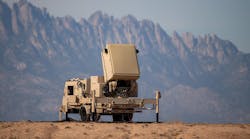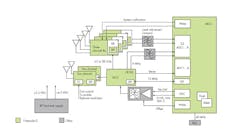Kit Aids Development for Satellite Radar Sensor Chip
Things move fast in the wireless world, and the realm of automotive advanced driver-assistance system (ADAS) electronics is no exception. The typical electronic system architecture in today’s vehicles is an edge architecture. But edge architectures are giving way to satellite architectures, whereby radar sensors output semi-processed data to a central processor for ADAS decision-making using sensor-fusion algorithms. This approach takes advantage of 360-degree sensor coverage for greater levels of vehicle safety.
One device that fits into this category is Texas Instruments’ AWR2544, an FMCW satellite radar-on-chip sensor that operates from 76 to 81 GHz. It’s said to be the industry’s first device with launch-on-package (LOP) technology. LOP helps reduce sensor size by up to 30% by mounting a 3D waveguide antenna on the opposite side of the PCB.
Not only that, but LOP technology boosts sensor ranges to more than 200 meters. The result is increased ADAS intelligence for higher levels of vehicle autonomy due to smarter decision making from farther away.
TI also offers its AWR2544LOPEVM, an easy-to-use evaluation board for the radar-sensor chip. It provides direct connectivity to TI’s DCA1000EVM evaluation module for real-time data capture and streaming. The AWR2544LOPEVM kit contains all necessary elements to develop software for the sensor’s on-chip Arm Cortex-R5F controller and hardware accelerator. In addition, there's on-board emulation for programming and debugging as well as buttons and LEDs to quickly integrate a basic UI.
The AWR2544LOPEVM evaluation module is available from TI for $549, while the DCA1000EVM real-time data-capture adapter sells for $599 and can be had from TI or its distribution channels.
Related links:





